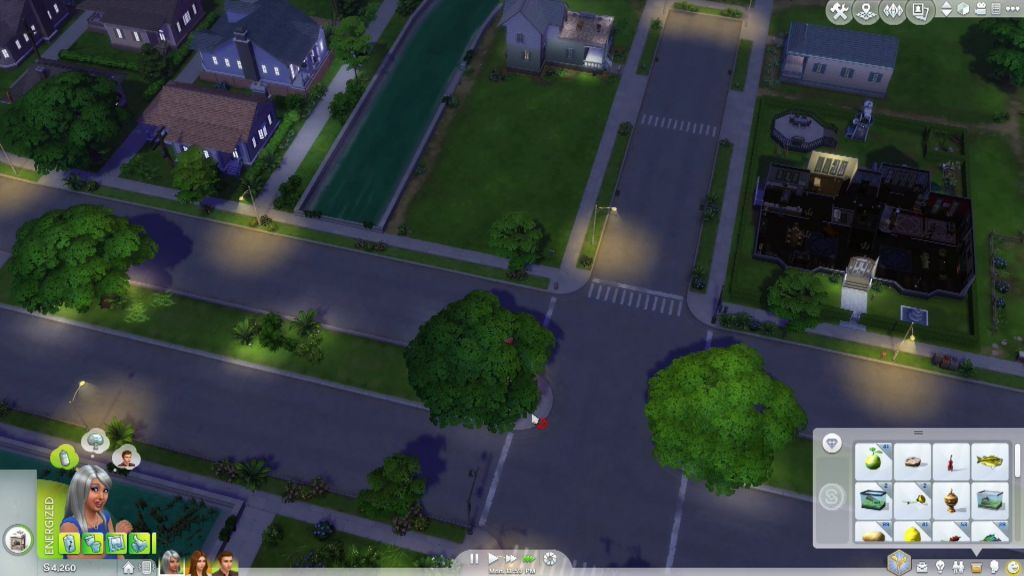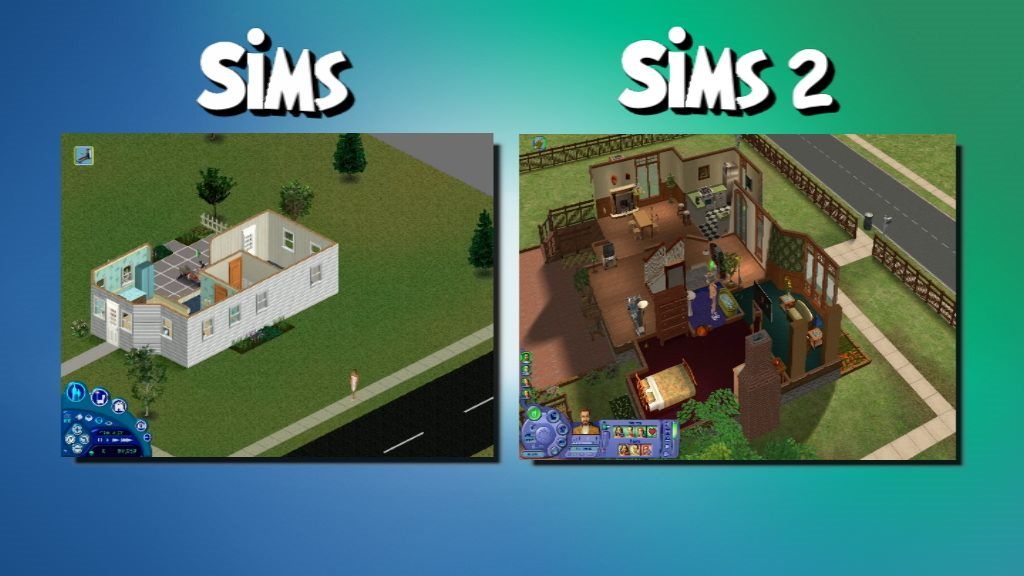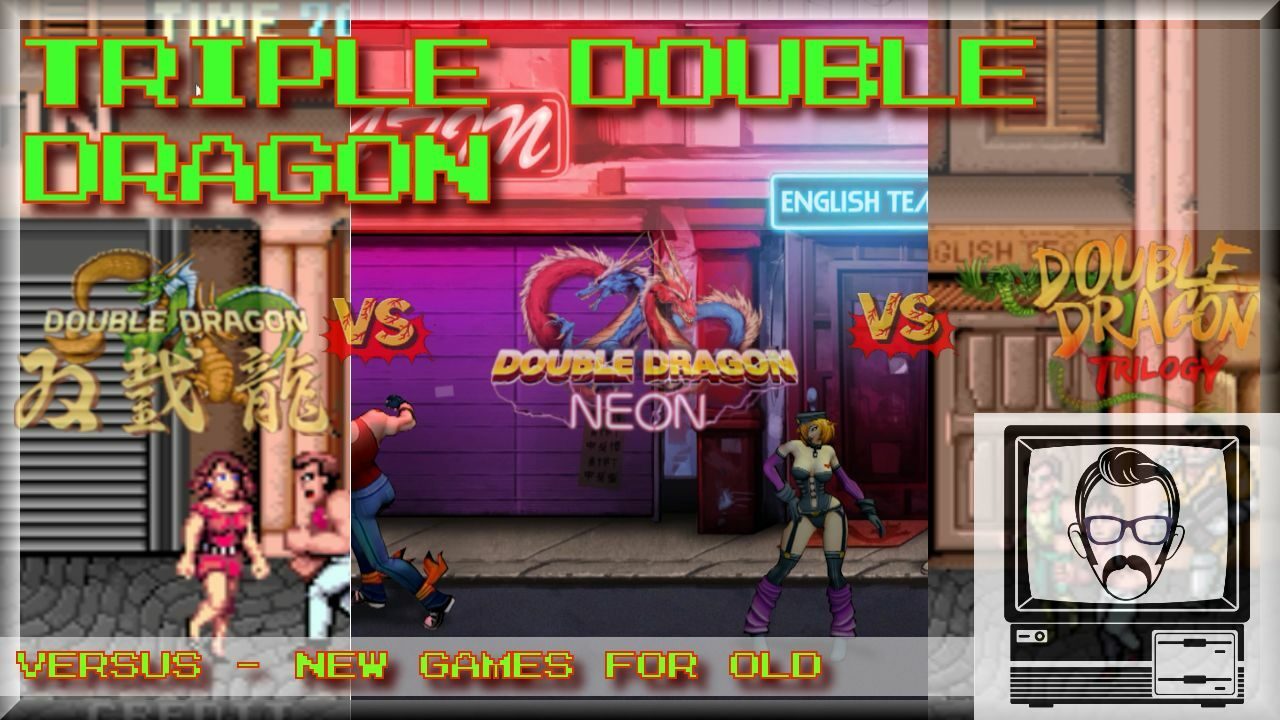Watch the Video
It’s not often I get to compare 4 generations of game, but The Sims 1 vs Sims 2 vs Sims 3 vs Sims 4 is one I’ve found intriguing for a while, especially as it’s technically on the same platform still. This video charts the Sims Evolution from it’s conception with The Sims in 2000, through Sims 2 in 2004, Sims 3 in 2009 and finally, Sims 4 in 2014 and compares all the Sim games against graphics, features, quirks, gameplay, playability, expansion packs and lots in-between.
Subscribe to Nostalgia Nerd on Youtube
The Sims feels like it’s been with us for a lifetime, back well into the 90s, but the original game didn’t actually arrive until February 4th 2000…. Come to think of it, that’s still 16 years ago now. Aish!
Back then I had an AMD K6 Processor with some kind of Diamond Edge video card, which wasn’t a bad combination at the time, but the original game still took an age to load and wasn’t the smoothest experience in the world. We were talking a pretty advanced simulation, especially for that era. We’d had city simulations, sports simulations and even ant simulations but never really a people simulator. Of course, since then, things have advanced even further, and the specification requirements have moved with the times, so clearly a lot has evolved.
The Sims is a game which I’ve dipped in and out of over that time in it’s various releases and with various expansion packs, but remembering exactly what’s changed, what’s advanced is tricky. It’s the same when you remember back to a Spectrum game you played in the 80s… back then it felt graphically amazing, and it’s that feeling which stays with us more than any technical aspect.
Here’s the subsequent timeline; Sims 2 was released in September 2004, 3 in June 2009 and 4 in September 2014. With that sort of spacing you can probably expect 5 in around 2019. Disconcertingly the year the Running Man is set.
It really takes a side by side comparison to see exactly how far we’ve come and thankfully, I find that kind of thing fascinating. So let’s take a comparative look, and let’s begin with the biggest difference of them all, the graphics.
Ok, so here’s the first Sims game. It doesn’t look drastically different from what we have now. I mean, the resolution is lower, the detail is a lot lower, but you can still make out what’s what, we still have wall paper, shadows, carpets, expressions…. kinda, but the biggest change is a technical one. All the games which follow are fully 3D rendered environments. The first game however is completely isometric. You can zoom in and out and even choose between 4 perspectives, but your view point is fixed to this 45 degree angle. Back in 2000, that felt pretty incredible and was perfect for providing a god like perspective, but now it just feels stiff, inflexible and uncooperative. The sims themselves are still 3D rendered, but the environment is a pseudo 3D world.. given the technical restrictions of hardware back then, you can understand why. My K6 wouldn’t have even loaded a full 3D explorable environment, let alone been playable.
Other than that, everything else graphic related is just a refining process. Higher resolution, higher detail, higher fidelity.
So let’s move onto the…
Gameplay
The first thing you’ll notice is the neighbourhood. The first game featured a pre-defined hood, with more available through expansion packs. For most people, the main goal was to establish your sim family and progress up to the mansion at the top of the map.
Game 2 brought in 2 additional neighbourhoods, which allowed some customisation, but crucially entire neighbourhoods could be built from scratch and added to the menu screen. This carried on into the third game with a pre-designed world, but also, the ability to add new worlds rather than neighbourhoods, as and when you wanted. We also had greater flexibility to travel around these worlds, and a more expansive feel.
The fourth game is kind of a back step. The customisation ability is absent, but instead of openness, we get 3 pre-designed worlds and a more restrictive method of navigating them. The game has shifted more to focus on the individual rather than the larger perspective.
When it comes to building customisation, 1 limits you to just 2 floors with no scope for loft space nor basements. 2 brought an incredible 5 floors or 15 via the University pack and a cheat code. Roof types, such as pagoda were also available with expansion packs. Sims 3 added basements with the World Adventures expansion and then 4 went and spoilt our 15 floor fun with just a 4 floor maximum. Also, what happened to the auto roof function?
Ok, let’s move into the game mechanics and start with the basics. Life stages. Sims 1 has 3 stages, baby, child and adult, although babies are merely objects in this instance which quickly turn into children after 3 days. Once they’re in that child state, they remain there indefinitely. No growing up, no dying, nothing. The exception is if you have the Makin’Magic expansion where they can age to adults with a charm, but the end result is a completely random adult who may vary considerably from their childhood appearance. Sims 2 brought 6 life stages into play:- baby, toddler, child, teen, adult, elder and an additional young adult with the University expansion. You could also now die, but only the active plot ages. Sims 3 incorporated these all into the base pack along with aging on all plots during play, and Sims 4 did it’s common trick of regression with toddler taken out (meaning you no longer get to teach your children to walk and talk) and babies once again reduced to mere objects.
Talking about babies, pregnancy in the first game is an easy affair. A simple mouse click and boom! Baby appeareth. Other than skin colour, no genetics are passed on either. Sims 2 brings a 3 day pregnancy and it’s worth noting that men could be abducted by aliens and return back to earth pregnant. God, it’s all about the Arnie movies today isn’t it? 3 and 4 follow a similar course with the alien routine available in expansion packs.
Once you have kids, you’d better be afraid though. The first game would banish kids with low grads to military school… FOREVER! The second game was slightly less harsh; you had the option of private or public school, with just a social worker removing them for poor grades (potentially to be adopted by another plot), and then with the arrivial of Sims 3, meh, who cares, kids don’t even have to attend school! Hurray!
When it comes to more immediate time scales, you may notice a lack of structured weeks on 1; there are no weekdays, weekends or days off. It’s just a rolling week. You can miss work or school, provided you attend the next day, otherwise you’re out. This was quite fortunate if you wanted a new job because you couldn’t actually quit your occupation. Firing was the only way.
2 introduced a 7 day week with varying days off. You can also call in sick, to quit, or even retire – if you’re an elder. School kids also go the weekends off (yay!). The same was true of 3 and 4, although you need the Seasons pack to call in sick. Still you can just bunk off if you don’t mind dropping a bit of performance.
So what about interactions with other sims? Well, all the games featured the home phone, with a mobile introduced in 3. Phone calls in 1 were usually either prank or for baby adoption. 2 allowed other sim friends to phone, 3 allowed richer experiences with sims via the phone and 4 included interactivity for children to phone and ask for playdates with other sim kids.
As for NPCs, most were not interactive in 1, including maids and social workers. This opened up for the second game, further with the 3rd and finally all NPCs allow interaction in the 4th, even the drivers!
The mundane task of bills went from delivery every 3 days, to Tuesdays and Thursdays for 2 and 3 and a more acceptable weekly in the 4th. One thing missing from all sequels is the household accounts screen depicting income and expenditure over the past 3 days. I think this probably reminded people of reality too much. After all the Sims is a great tool for escapism, not accountancy.
Next up we have memories. 1… Nope, no memories. 2, allows you to collect visible memories and use memory markers for conversation, 3 added screenshots after an update patch and in 4, they are retained, but completely optional.
Aspirations, which were a structural requirement in 2, were not part of the first game. In 3 they were replaced by lifetime wishes and happiness points, whilst 4 saw them merge – with aspirations returning, but acting also like a lifetime wish. It’s a similar story for wants as they’re replaced with goals and wishes in the latter games, although 2 was the only game to be blessed with fears.
Skills however were with us from the first game. They increased from 6 up to 20 in the last game, with additional via. expansion.
So what have we learnt. Well, the first game was more of a robotic life simulation. The characters of the sims varied, they had different personalities with different levels of different traits but they weren’t driven by defined differences, by goals or by distinct personality characteristics. You played the game and progressed each individual as you went, but underneath they were all fairly similar, more like a human flock simulator, which is how it was intended. With the first game Maxis weren’t entirely convinced it would be a success, in fact the idea started as an architect simulator by creator Will Wright… kind of an extension of Sim City. Will eventually realised that playing with people in this environment was more fun than building, and so the basic Sims premise was born. it wasn’t until the huge sales figures that they realised they had a winner of their hands, leading to substantial development being poured into the sequels and further humanisation of the Sims themselves. The first game actually became the the biggest selling PC game of all time, and was only touted by it’s sequel which brought a load of changes into the fold and really took the series in it’s current direction. The Create a Sim aspect was a big part of that.
Create-a-sim
Ok, let’s look at the sims themselves. The Create-a-sim has undergone various revisions throughout time, but let’s start with the name.
In 1, the last name is the same for all Sims in the household, same in 2 unless you have University, but 3 allowed you to have different last names and the ability to change the household name! Getting with the times.
In 1, head style determines lot of your features, including hairstyle, shape, hair & eye colour, facial hair… the list goes on. This changed in 2 where head style only determines the shape of your sim’s head. The flexibility of those options also expanded through the sequels. 2 allowed hair and eyebrow colour to be chosen from four colours. 3 allowed individual selection of both hair & eyebrow colour, using a large colour chart, as well as opening up options for highlights, root colour and vibrant colouring. Sims 4 simplified things a little allowing 16 hair colours, although still allowing independent colouration of features.
Skin colour progressed from 3 options in the first game, to 4, to a range of skin tones (including red, blue and green) and then to 16 in 4 with 2 custom colours of green and blue.
Body type in 1 is dependent on clothing worn by the sim. This changed in 2 with thin thin, fit and fat body types. 3 brought sliders into play and allowed much more controlled adjustments and this was expanded even further in 4 allowing all parts of the body to be stretched and resized independently from each other.
Clothing has changed as well, from the rather basic set flippable options, to thumb nails allowing individual customisation. This was further enhanced in 3 with create-a-style. 4 again simplified, by taking 2’s lead and adding various colour presets.
Ok, sleepwear, swimwear and formalwear…. Originally they were chosen automatically; no choice for us I’m afraid. 2 gave us a choice and 3 retained the choice but merged underwear and sleepwear into the same category. 4 simply took away the ability to choose career outfits.
So what about accessories? The first as you may expect was fairly rigid and you got what you got. 2 allowed glasses to be removed but most accessories were determined by your sim’s outfit. 3 gave us loads of customisation with all accessories which was thankfully retained in 4.
Now, as we saw earlier, personalities were simply controlled by 25 personality points configured to different aspects of the sim. You’re not required to use all the points, and although the changes weren’t massively dramatic, I guess this was quite a flexible approach to creating your own individuals. 2 added aspirations into this fold to further differentiate, but you were forced to use all your personality points. The third game abolished all this and instead brought in a trait system which was supposed to give sims a more realistic and unique personality. For some it felt limiting, but it did add a wider gap between personality types. 4 again took this formula and simplified with the requirement of choosing 3 traits at young adult with an aspiration. Once you complete an aspiration you can then receive further unique traits.
Now, if we take a step back from individual sims, we get the family, and the first game didn’t really play around with this too much. You got your household family, but there was no family tree. The second game changed this and relationships between spouses, siblings and children were established. This continued through 3, with the addition of boyfriends & girlfriends, and 4 is essentially a step backwards to 2.
And that’s pretty much the bulk of the changes through the games. I mean there’s a lot more, in terms of gameplay, emotional characteristics, graphics and nuances. But we could be here all day listing every individual change.
Which game you prefer is really personal preference. Many prefer the functionality, flexibility & core gameplay brought about in the second game, highlighted by it outselling every other PC game ever made. Although the first game was revolutionary in it’s game style, the second game was a big evolutionary step in what it brought to the table. But also, a lot of people are massive fans of the reaslism, additional customisation and playability of the third game.
Whatever your preference, we’re currently at the fourth game, and although we’re blessed with now, somewhat cartoony graphics and a scattered emotional aspect that can change as quickly as the wind direction, there’s no denying that the graphical engine has come on leaps and bounds. Everything is clearer, brighter and more pleasing on the eye. 4 is also arguably the easiest of the games to get into.
For me personally, I feel that 2 was an outstanding game and probably offered the most in quirks and gameplay style. 3 and 4 are great games, but I feel a combination of the two may have produced a slightly more engaging experience.
But, the first game, purely for it’s nostalgia and revolutionary experience remains my favourite in the series. OF course this is subjective, and you’ll no doubt have a different opnion. So, what’s yours? Drop a comment below and let me know!
Meanwhile, I’ll leave you with an object comparison from each of the games, and bid you farewell.

Nostalgia Nerd is also known by the name Peter Leigh. They routinely make YouTube videos and then publish the scripts to those videos here. You can follow Nostalgia Nerd using the social links below.




















4 Comments
Add Yours →Man that made me really nostalgic! The original sims was one the first games I ever played (the first was either AOE2 or Mario). My favourite has to be The sims 3. I love the open world and story progression and customization. I actually never played sims 2 or 4. I don’t plan on getting 4 but would love to get 2.
But anyways great article!!
I played Sims 3 more than the other Sims games. I think it’s the best.
My personal favourite was Makin Magic rawg.io/games/the-sims-makin-magic I have so sweet memories of this game. Maybe after reading this I will go and reinstall it on my PC Thank you for the article.
Hi, Peter Leigh. I was considering getting the sims 4 on my new laptop. I had the old sims 1, actually play/ed the sims 2 at least a couple times a year since it came out (much, much more when I was a teen),and remember not really liking the sims 3 very much. I think my computer was such crap I couldn’t even load sims 2 university, and didn’t play much of sims 1 unleashed either before computer crashes. I wish I had known that all of the sims 2 was released for free in 2014! It really is my favorite, and now am thinking to just stick to what I have always enjoyed now that I have a child I am beginning to show games to. Thanks for the review.